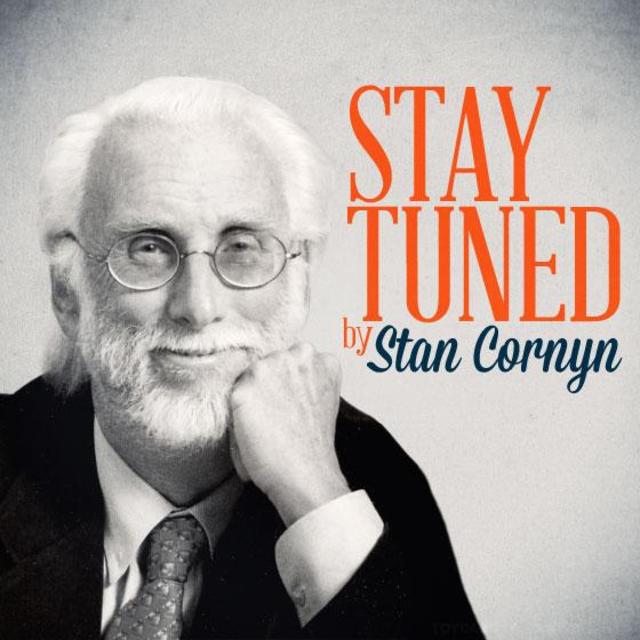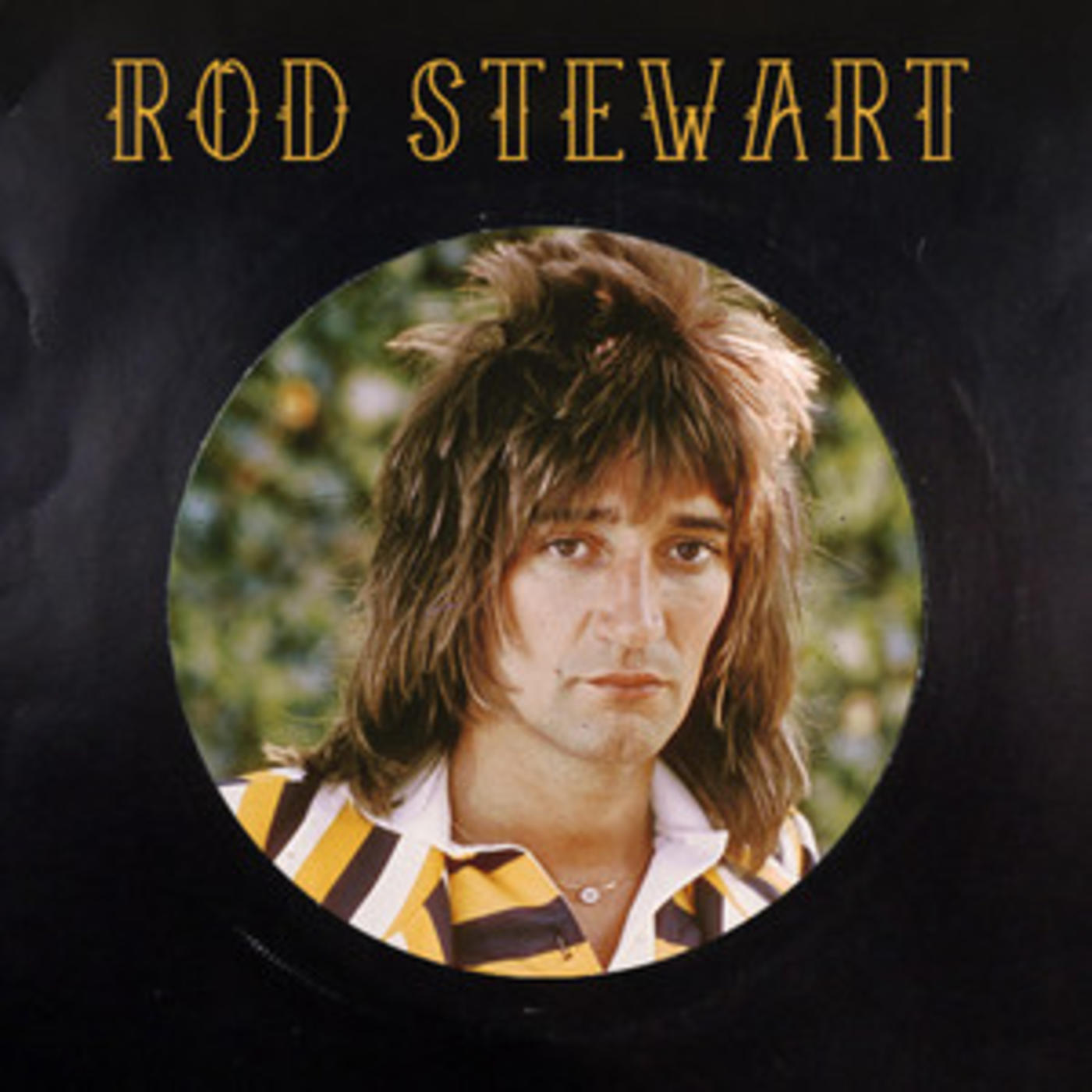Stay Tuned By Stan Cornyn: Hot Rod

Every Tuesday and Thursday, former Warner Bros. Records executive and industry insider Stan Cornyn ruminates on the past, present, and future of the music business.
1976
Stewart Crosses the Atlantic
In 1975, England’s rock stars left home and moved in to citizenship-homes anywhere but in England. Their beloved country had raised its income tax on its citizens’ incomes, a tax that went (for major earners) up to 83%. So out from England scooted The Rolling Stones, Cat Stevens, members of Pink Floyd, David Bowie, Bad Company, Marc Bolan, Jethro Tull, Tom Jones, and our subject here: the red hot Rod Stewart.
Rod moved to Los Angeles in 1975, and while here signed to record for Warner Bros. Records. His first Warner album’s title indicated his recent back-story: the ocean-hopping Stewart released a Warner LP called Atlantic Crossing.
Stewart wanted a new sound, too, and had turned to producer Tom Dowd and the backing of the Muscle Shoals Rhythm Section – another crossing of Atlantic, this time the record label. Heavy metal was passé for Rod.
He was in Hollywood, he dressed better, and he did better than just random groupies.
Gone now from Rod’s life were Rod’s early music associates, The Faces, his London gang. With Dowd in the booth, in came a new Rod-style, accompanied by The Memphis Horns and Booker T and many of the MGs.
The first Warner album was called Atlantic Crossing.
Atlantic Crossing got Stewart back to Top Ten in Billboard, and the album’s single, “Sailing,” went UK #1, but only Top 9 in his new homeland, the United States of Billboard.
Catch Rod’s “Sailing” here:
Making this first album together, Stewart and Dowd created other hit-possibilities beyond “Sailing”: “This Old Heart of Mine” and “I Don’t Want to Talk About It.” It all felt so, so fresh.
(Two years later, from these session came out a double-A-side single: “I Don’t Want to Talk About It” and “The First Cut Is the Deepest.”)
Stewart divided Atlantic Crossing and his next few albums into sides: on this album, the first side was fast songs; second side for slow ones. This shrewd coupling came at the suggestion of hot Rod’s hot girl-friend, the Swedish actress-beauty Britt Ekland, to whom he also would listened.
The Britt Era
L.A. life had become more than just record sessions and his raspy voice. More than “being in a band.” It was also about girls, beauties who’d come to Hollywood for reasons other than tax relief. Early in such prominence was Britt Ekland, with whom Rod roomed from 1975 to 1977. They had been introduced by actress Joan Collins, who knew what’d get cookin’ after making this intro.
Britt had fun, and welcomed interviews about her new roommate. When one interviewer asked if it was true that Rod Stewart wore Britt’s panties, she set it straight, answering that “Rod did wear my underwear on stage, but for practical reasons. He always wore tight trousers, and my underwear would keep his package in place.” (Stewart had claimed that Britt used to send him packages with love notes and her underwear.) See?
Rod’s Britt Era lasted two full years until Ekland found out that Rod was playing around with the ex-wife of actor George Hamilton. George had earlier dated Britt Ekland, before he’d married Alana Hamilton. When George told Britt, “Oh how funny. Alana has just left me for your ex-boyfriend,” Britt blew her top.
Britt got into her car, drove home, and wanted to throw up.
And that’s that for this “panties” section. Back to albums.
Tonight’s the Night
One year goes by. Then Rod and the same gang made this second album for Warner, with producer Dowd again behind the glass. This LP was named not for the artists’ habits, but after a Renoir painting, “Bal du Moulin de la Galette,” only with Rod in the center of the cover crowd, dressed to fit.
1976: A Night on the Town
At first Rod’s second Warner album was going to be named I Like Sex, Drugs, Billiards and Violence. Then we decided on something a little more “acceptable.”
Album two was aimed as a strong follow-up to his first hit at Warners. Same musicians, same producer (Dowd), even that format of one slow side, and one fast side (except this time, with “fast” tunes on the B-side. But above all, it was still “party time.”
SIDE ONE – leads the listener into emotion and seduction, particularly during this side’s conclusion: Rod Stewart’s fresh “The Killing of Georgie” (in two parts). The song’s story covers the murder of a gay friend in a hate crime. Hardly what Rod’s fans were expecting.
Getting to “Georgie” first takes the listener through “Tonight’s the Night,” and “The First Cut Is the Deepest,” and “Fool for You.”
Watch Britt Eklund’s music video of “Tonight’s the Night” here:
SIDE TWO – the fast songs – is best known for its lewd “The Balltrap,” a party song if ever there’s a party:
First time I had you up on ol' Park Lane
You didn't know my name even when I came
As I recall you let me walk home in the rain
You said I'm cute but tell the truth
It's my body you want with the red hot juice
C'mon honey let's call the whole thing off
You got me in a balltrap
Lord, I'm eating outta your hands
You got me in a balltrap, hung up on a one-night stand
You got me in a balltrap, strung out on a midnight tram
A Night on the Town went to #2 on Billboard’s albums chart. Platinum, too.
1977: Footloose and Fancy Free
By now, Rod had settled in with Alana and also with his own band, called the Rod Stewart Group. But “settled” was a bad word, and “footloose” and “fancy free” felt more audience-seductive.
Rod had a fresh look now. He was glam, not funk. He wore make-up and (as mentioned earlier by Britt Ekland in our “her panties” theme), Rod now wore Spandex pants.
Footloose came out in 1977’s November, with Warner still having the U.S. market, and a label called Riva having the UK. (Riva had been set up for Rod during the Atlantic crossing of 1975 by his manager, Billy Gaff, who loved multiple royalty streams.)
Footloose produced hits of different sizes: biggest was (and is) “You’re in My Heart,” which got up to #4 in America.
Check out an early 2000s rendition of Rod's “You’re in My Heart”:
1978: Blondes Have More Fun
Beyond came his confession song, “I Was Only Joking,” and the rocking “Hot Legs.”
You got legs right up to your neck
You’re making me a physical wreck
I’m talking to you
Hot legs, in your satin shoes
Hot legs, are you still in school
Hot legs, you're making me a fool
I love you honey
Hot legs, making your mark
Hot legs, keep my pencil sharp
Hot legs, keep your hands to yourself
I love you honey
Hot legs, you're wearing me out
Hot legs, you can scream and shout
Hot legs, you're still in school
I love you honey
Disco time, and showing whether those with blonde hair have more fun, the album’s cover photo clears up whether this means the girls or the boys. (The back cover covers the album’s ass by adding “…Or Do They?”)
Disco time also meant the short-lived “picture disc” form, like this:
Blondes sold huge, more than 14,000,000 copies around the world.
And there was even an alternative “Special Disco Mix” version Warner issued of “Do Ya Think I’m Sexy”.
Watch the official video for “Do Ya Think I’m Sexy,” here:
If you really need me, just reach out and touch me
Come on, sugar, let me know
If you really, really, really, really need me
Just let me know, just reach out and touch me
“Do Ya” got up to Billboard #5, based on the year’s rage over disco sound. It became the album’s lead single, got to #1 on the charts, and in the U.S. sold 4 million of that worldwide 14.It would be Rod’s last Billboard #1 album for a quarter century.
Rod’s Eighties Are Different
1981: Foolish Behavior
In the 1980s, Rod kept recording. His next album, Foolish Behavior held one hit song, aptly titled “Passion.” But Rod’s public savior was the birth of MTV (August, 1981), where the channel delighted in heavy play of Rod’s Warner videos.
Rod turned elsewhere for his next big hit. It turned out to be in 3D: her name was Alana Hamilton and indeed they did get wed five months after Blondes came out, on April 6, 1979. Alana became one of Rod’s greatest hits (5 years; two children).
But as often happened, even after that time, a divorce would follow. Rod once summed up this part of his life by saying, “Instead of getting married again, I’m going to find a woman I don’t like and just give her a house.”
-- Stay Tuned
Whatever Happened To:
Rod Stewart: His reputation as a ladies man is not matched by his only three marriages, all three to blondes: To Alana Hamilton Stewart (1979-1984); then to Rachel Hunter (1990-2006), then to Penny Lancaster (2007 on).
Britt Ekland: In 1964, she married Peter Sellers. In 1973, she had a son, Nic, with record producer Lou Adler. Her tryst with Rod Stewart ran from 1975 to 1977. Then 1979-81. Married to singer Phil Lewis. Then in 1984, married Stray Cats rocker Slim Jim Phantom (b. 1961). One daughter, then divorced in 1992.
Alana Hamilton: In 1972, married actor George Hamilton; one child, Ashley; they divorced in 1975. Married Rod in 1979. Two children; divorced in 1984.
Rod Stewart Albums: Not counting his Faces albums, as of 2013, Rod Stewart has released 54 albums (29 studio albums; 3 live albums; and 22 more compilation albums. One of these is …
“Atlantic Crossing” -- On 30 June 2009, Rhino reissued the album as a two-disc CD with bonus tracks of the Moulin Rouge cover album, too.

